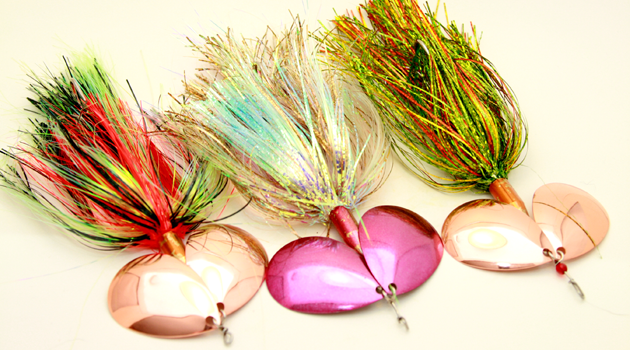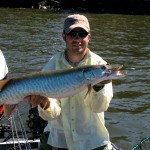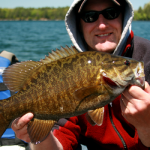In the era of economic recession, musky anglers are exposed to the cost effective strategies of building their own lures. Tackle crafting not only saves my bank account, but its creativity aspect helps me catch more muskies.
The cost of catching fish can be as affordable or expensive as the angler makes it. For muskellunge anglers, the average cost of catching a fish on the artificial lure is far from affordable. Many of today’s lures commonly run at prices between $10 to $30 dollars. At the high end I can fill my boat with gas. As online tackle shops and manufacturers have taken control of the economics within the musky fishing industry, the outlets for purchasing lure components and custom building tools are providing budget conscientious anglers with affordable and creative alternatives for catching fish.
Having started muskie fishing as a sophomore in high school, I never imagined having a collection of over 200 different baits. How I was able to afford so many $10 to $20 lures at a young age up until now is difficult to understand. In recent years, other obligations of higher priority have gotten in the way of my spending sprees for fishing tackle. These circumstances have led me to search for alternatives to save money and use my creativity to catch fish.
Presently, the musky fishing world is saturated with custom lure builders specializing in hardbait and bucktail production. These individuals build for their own personal use and sell commercially for high profits. The cost of custom made is considerably higher than the costs for mass produced lures. The theme behind custom creations is that they catch fish well. Maybe, but they catch the wallets of anglers even better.
Having walked the aisles at several musky tradeshows throughout the winter months, and making my weekly summer visits to Rollie & Helen’s Musky Shop, bucktails are without question the most popular musky lure of all time. Due to popularity, they’ve become one of the most popular lures of choice for custom builders. They are the quickest to build, the cheapest to assemble, and offer the most diversified selections in lure components and styles. As most mass produced bucktails of high quality cost more than $15, with at least half the price dedicated just to labor, building them yourself will save money. I’ve found that building these same lures myself with my own selected parts and components runs 50% or more off the cost for any mass produced lure.
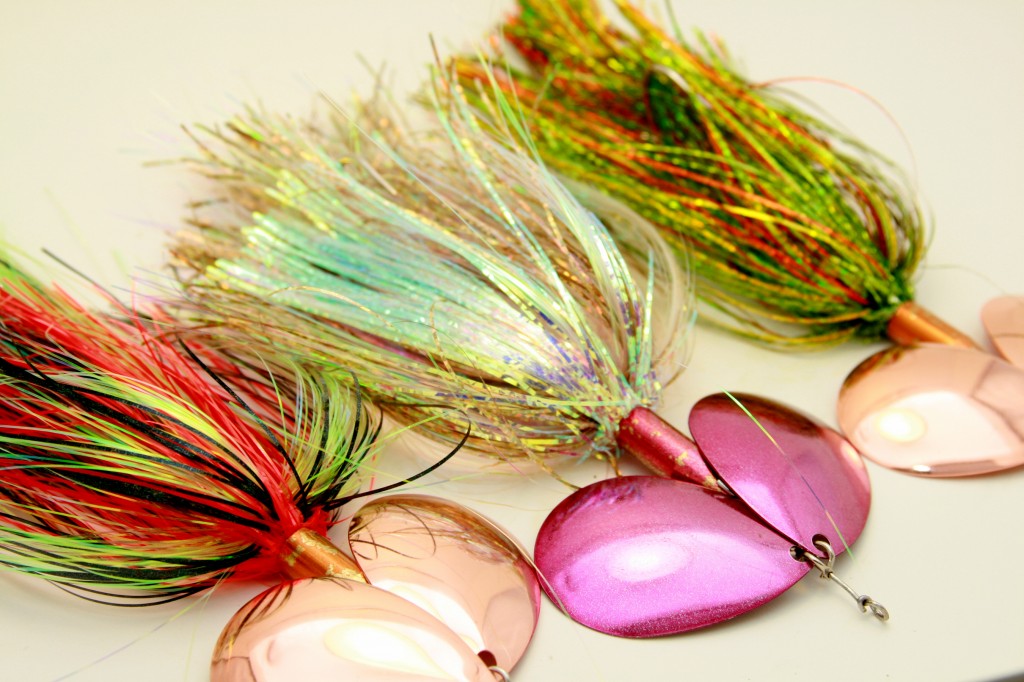
For these reasons, I stumbled upon the enjoyment and creativity of custom lure building. I started this hobby during the summer of 2012, and presently build my own flashabou bucktails for personal use. This allows me to save money and catch more fish. I grew tired of spending money on products with an inflated price which only keep getting more expensive. For the average price of one mass produced lure, I can build myself two or three of the same type.
There are several benefits to building my own bucktails. The primary benefit is the creativity aspect. This enables me to test my imagination and artistic abilities with hopes it leads to more follows and put more muskies in the boat. The creativity of custom building encompasses the selection of lure style, color combinations, blade size and type, skirt material, and quality of components and terminal tackle. By custom building, I am exposed to an infinite world of custom color combinations that most manufacturers have ignored. I am also subjected to testing my own knowledge of muskies and the color spectrum, and utilizing science and past experiences in order to match the lures I build to the environments and conditions they will be fished in.
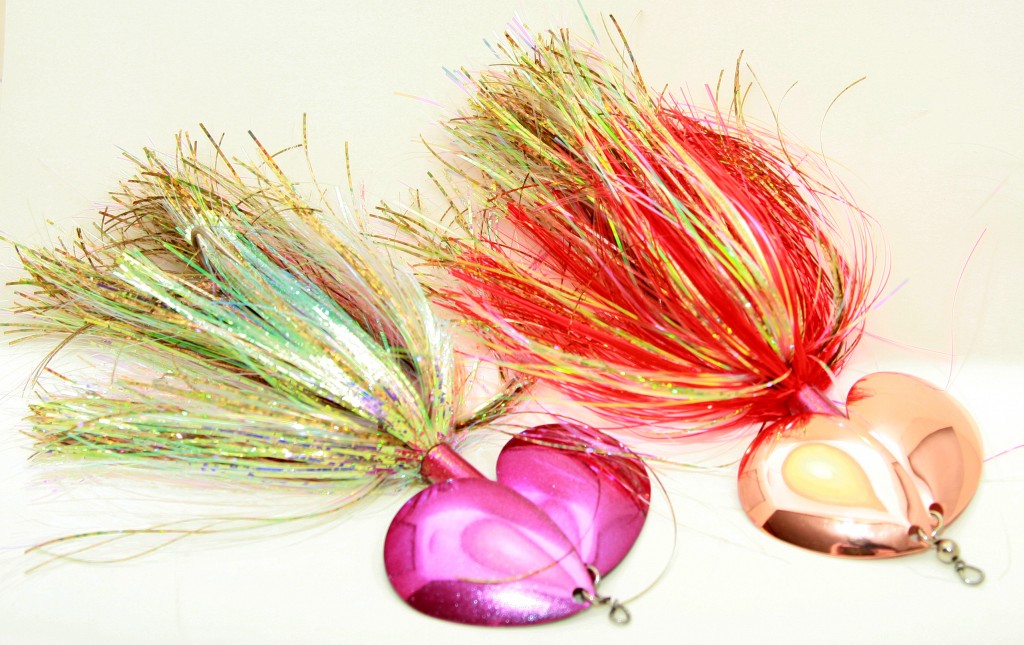
Musky bucktails are available in a variety of shapes, colors, sizes and styles. They are predominantly constructed by hand, either free-hand or with the aid of a heavy-duty fly tying vise. The tying vise is only necessary if tying your own flashabou, bucktail, or silicone skirts. However, it makes the entire construction process of the lure far quicker and easier on the hands. Tools such as needle nose and spilt ring pliers, crimpers, and wire cutters are necessary for the lure’s formation and construction. Pre-cut stainless wire between .050 and .060 diameter is the focal point of the lure as all parts and components involved in the lure are built around this frame.
My niche has become flashabou bucktails with size 7 and 8 blades in the double bladed versions because I predominantly fish lures of this type. For my lure production, components such as magnum Colorado blades in polished brass, copper or nickel and painted versions have become a favorite. So have flashabou skirts, brass and nickel beads, 3/0 to 6/0 treble hooks, 3/4 oz. bodies, and 1/2 oz. weights that allow for a weight-forward design a casting system. When selecting my components, I choose quality over quantity. By the time my lure is built, $5 to $7 was spent on its parts and assembly. The only part that didn’t cost was my time. That’s a substantial savings!
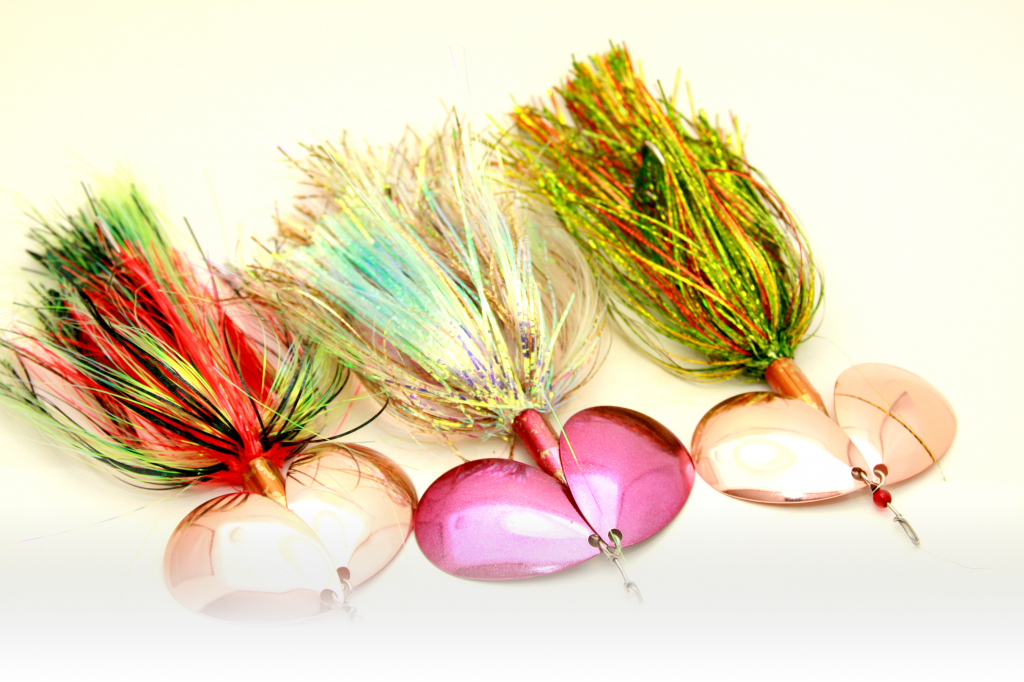
My first bucktail prototypes were put to the test during an August, 2012 trip to the Northwest Angle of Lake of the Woods, Ontario. On this first ever LOTW trip, I joined my friend Brian Malack as we fished its fertile musky populated waters for a week. The fishing for everyone in our group of ten anglers was challenging. Only five of us boated muskies. And I, the rookie who had never fished LOTW before, caught the most muskies of the group. Six of my eight fish boated came on my custom bucktail, a double-8 metallic pink Colorado bladed lure with gold flashabou skirt.
I turned to this lure after the first 8 hours of my first day of fishing was unproductive. Our morning guided trip with the legendary Doug Johnson ended prematurely within two hours due to engine failure on both his 250 Optimax and 10 horse kicker engine. That afternoon and evening as Brian and I went fishing ourselves, I couldn’t get any followers with any of the recommended lures to use. It was desperation, curiosity, and confidence in my own creation that led me to use it for the majority of this trip. Within the first few casts, a 42 incher was boated. The next day a 43″, and throughout the week four others followed suit as well. I was able to raise several high 40″ and a few 50″ fish to boatside.
A number of factors led to this custom lure success. First, that week’s pattern was quickly established as muskies were using shallow windblown reefs during the midday and afternoon hours to feed on walleyes. A gold flashabou skirt such as my lure worked to perfection in matching the hatch. Second, the popular LOTW color combination of black/nickel failed to produce. Switching over to a color combination fish likely have never seen before surely helped. As challenging of a week it was, I attribute my creativity for saving the trip. Although Lake of the Woods is loaded with muskies, I was able to replicate similar success with other various custom bucktails of the same design on the Wisconsin waters I fished for the remainder of the year. I’ve learned that creativity can work just about anywhere there’s muskies!
The availability of lure building parts and components is abundant through retailers and online distributors. Many dedicated anglers fail to realize this. Most musky lure building enthusiasts turn to Thorne Brothers and Rollie & Helen’s Musky Shop for their custom lure building needs. Both sell a diverse selection of parts, components, tools and other accessories for every project imaginable. Likewise, some anglers also turn to specialty online outlets such as Jann’s Netcraft and Hagen’s Fishing Components for their own parts and components. Finally, for those who build for both personal use and commercially, Worth Company which is based in Stevens Point, Wisconsin is a source for bulk ordering (mass orders suggested) and distributorship to factory and independent manufacturers. Many mass produced lures are made with the same exact components supplied by all of these retailers and distributors.
The cost to build your own lure depends on the price of components. A typical double bladed bucktail I build with magnum #8 blades and flashabou skirt usually runs between the range of $5 to $7. Smaller lures such as a single bladed bucktail with a fur or flashabou tail and #4 to #6 blade will obviously cost less. Meanwhile, substantially larger lures such as the popular double-ten (cowgirl style) with magnum #10 blades, tandem hooks and oversized skirt will cost substantially more due to the need for larger and more heavy-duty components.
For an overall price breakdown of a typical lure I build, the average prices from my suppliers are as follows: Two #8 magnum Colorado blades, painted or unpainted, $.50-$1.00 each; 12 to 18 inch stainless steel wire in .050-.060 diameter, $.50-$1.00 each; A handful of brass or nickel beads, $.10 each; 5/0 or 6/0 Mustad or Eagle Claw Lazer Sharp treble hook, $1.00 each; 3/4oz solid brass body and 1/2oz weight, $1.00 and .$25 each; Pre-tied flashabou skirt or self-tied flashabou skirt, $2.99 avg each. Do the math. It’s an unbelievable savings in comparison to what you can buy from the manufacturer.
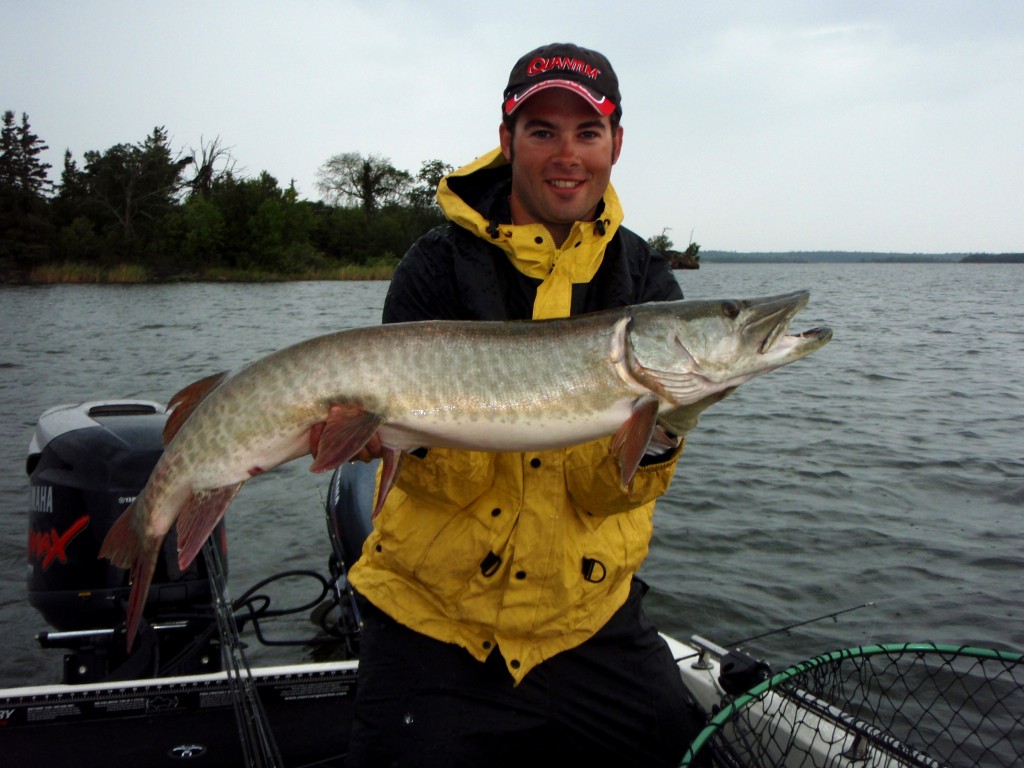
For those of you who are interested in attempting to lure build in 2013, I advise you not to spend time building for the sake of learning a new hobby and having a cooler and more diversified looking tackle box with lures of overblown proportions. The objective of such DIY projects is not only to catch more muskies, but to build yourself functioning lures according to your angling style and fishing strengths. Build your lures to the best interests of muskies, your budget, and the specifications dictated by your rods and reels. As your first custom lure is assembled, have confidence that it will get bit within the first few casts. If and whenever it gets struck, nothing feels as rewarding as landing that first muskie on a new lure color it’s seldom seen before.


